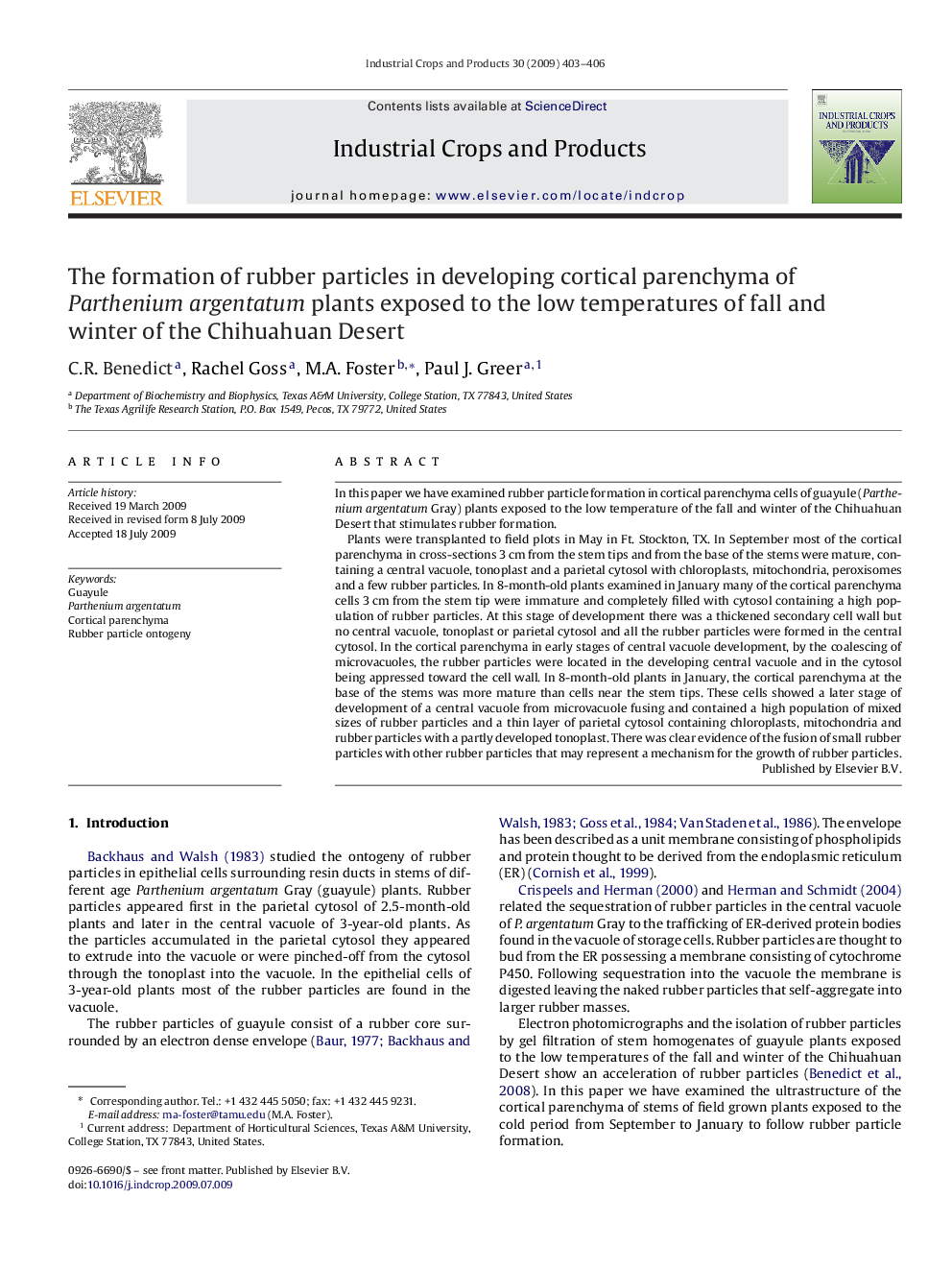| Article ID | Journal | Published Year | Pages | File Type |
|---|---|---|---|---|
| 4514845 | Industrial Crops and Products | 2009 | 4 Pages |
Abstract
Plants were transplanted to field plots in May in Ft. Stockton, TX. In September most of the cortical parenchyma in cross-sections 3Â cm from the stem tips and from the base of the stems were mature, containing a central vacuole, tonoplast and a parietal cytosol with chloroplasts, mitochondria, peroxisomes and a few rubber particles. In 8-month-old plants examined in January many of the cortical parenchyma cells 3Â cm from the stem tip were immature and completely filled with cytosol containing a high population of rubber particles. At this stage of development there was a thickened secondary cell wall but no central vacuole, tonoplast or parietal cytosol and all the rubber particles were formed in the central cytosol. In the cortical parenchyma in early stages of central vacuole development, by the coalescing of microvacuoles, the rubber particles were located in the developing central vacuole and in the cytosol being appressed toward the cell wall. In 8-month-old plants in January, the cortical parenchyma at the base of the stems was more mature than cells near the stem tips. These cells showed a later stage of development of a central vacuole from microvacuole fusing and contained a high population of mixed sizes of rubber particles and a thin layer of parietal cytosol containing chloroplasts, mitochondria and rubber particles with a partly developed tonoplast. There was clear evidence of the fusion of small rubber particles with other rubber particles that may represent a mechanism for the growth of rubber particles.
Keywords
Related Topics
Life Sciences
Agricultural and Biological Sciences
Agronomy and Crop Science
Authors
C.R. Benedict, Rachel Goss, M.A. Foster, Paul J. Greer,
